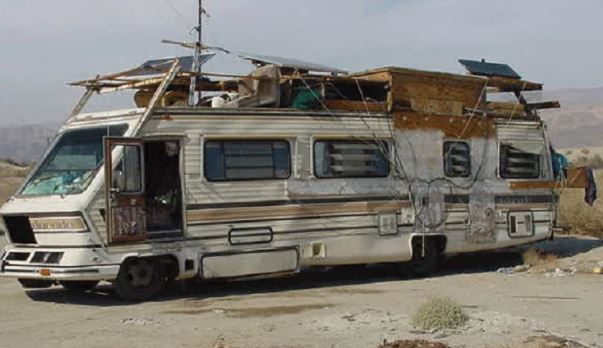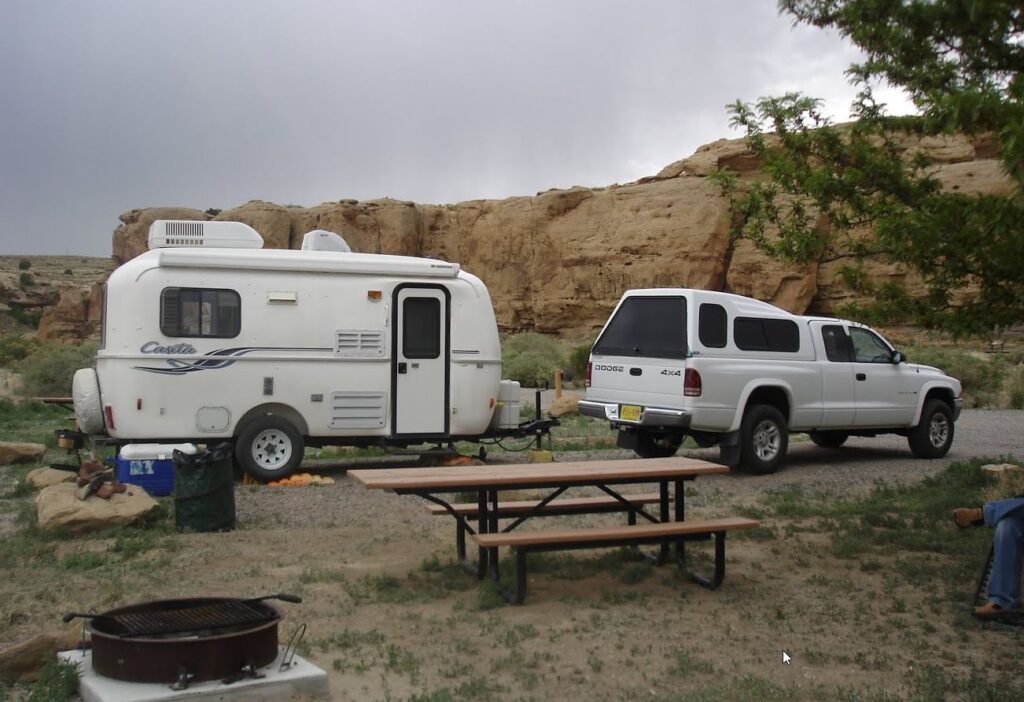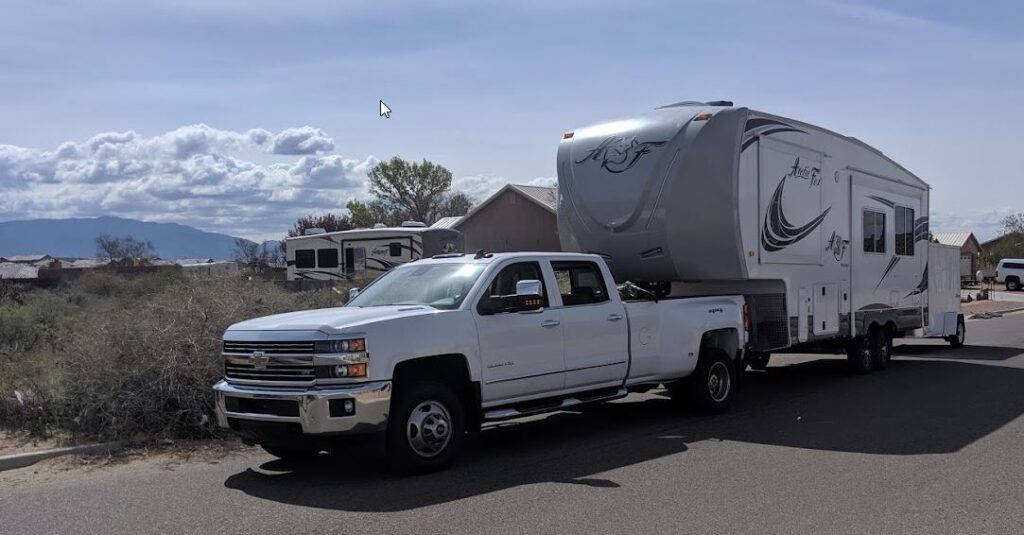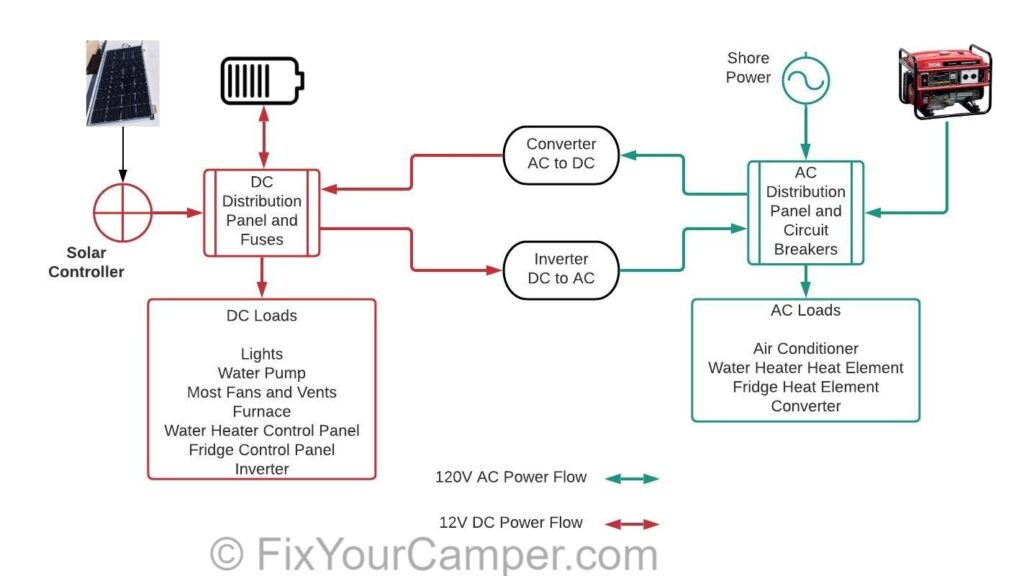Many people when considering the purchase of a camper go to the nearest big dealership and start looking around. They get enamored by the slick designs and flashy units on display. Often they find a floorplan they think is perfect and decide this is the rig for me! That quick decision may lead to regret. I want to help you avoid those pitfalls and end up with a camper that has the right level of quality to meet your needs.
Floorplan is important, but you’ll find similar floorplans across many makes and models of campers.
I’ve made mistakes in this department. From minor to “get rid of that unit ASAP” level. You can read about one of my snafu’s here.
So here are the things I consider and do when evaluating a potential camper purchase.
Review Sites
I am a huge fan and subscriber to Consumer Reports. The way they purchase cars for testing, gather data from their members and present it into a comprehensive evaluation of what you can expect in almost any vehicle is absolutely outstanding. There is nothing else like it or that I would trust more. Sadly, there isn’t an organization like it that does the same level of testing and research for RV campers.
There are a TON of sites out there claiming to do “reviews” of the RV’s on the market and all for “free”. I don’t believe most of them are even physically inspecting the units they are reviewing. Take some manufacture provided information and maybe spend a few minutes on the brand specific forums and groups and they write it up and let it go. I don’t have faith in any of them.
There are a couple of paid organizations that have popped up in this space. The one I’ve personally used is the RV Consumer Group. The $85 dollar cost at the time steered me away from a 5th wheel I was seriously considering. I like how they evaluate weight distribution and other safety factors that could have a huge impact on safety. Yep, I think it is VERY worth it.
The other one I hear about but don’t have personal experience is RV Reviews. They are a bit less expensive and likely can give you some reasonable guidance as well.
User Forums and Groups
Another useful resource are the dedicated user forums. You can use things like Facebook groups, but I think the way that forums are organized makes them much more useful. I tend to stay an active member of these forums, sometimes even beyond owning that brand.
Search these forums for certain keywords like “Issue”, “problem”, “failure”, “failed”, etc. And remember as you do this – ALL campers have issues. You are looking for certain types of issues that many people seem to be having, and look at the fixes and work arounds that people are coming up with. Many “problems” are so minor that it’s an acceptable risk in the balance of everything else a particular unit offers. Some are not and you’ll decide to move on to another brand.
Remember that members of these forums will report their problems, but they are also often big fans of their particular model. This makes perfect sense when you consider that these users made a large investment and don’t want to think they could have made a better choice. Don’t hold it against them, I’m a fanboy of Northwood and Casita products. Northwood cuz that is what I now own, and Casita cuz that was just a kickin’ little trailer!
BUT – these shouldn’t be the only factors you use in your decision and you should do some research and quality inspection yourself!
(Of course, I’d be remiss if I didn’t remind you that our very own Member Community is by far the BEST place to do some digging! We are building the best of the best here!)
The Pre-Sales Inspection
This is by far the best way to get a feel of the quality of a make, model or specific camper. These are the things I look at LONG before I make any kind of a commitment to the seller. You’re looking for signs of the quality and attention to detail that the manufacturer is taking in their units. After you spend a bit of time out there looking at units you’ll start to get a feel for what is “right” in a build.
Frame and Chassis
This section really only applies to towables. Drivable RVs the fame and chassis are manufactured by a 3rd party – typically Ford, Mercedes or International. For those I would research each chassis manufacturer to determine quality. And of course truck campers don’t have a frame or chassis.
For towables, the frame and chassis are like the foundation of the camper. Low quality or substandard parts here can impact MANY other aspects of the build and should be avoided. You are comparing the build to other units in the same class and weight range. Are most of the frames you see 10″ I-Beam construction, but brand Y is 8″ I-Beams? Do the tires and the axles have weight capacity headroom against the trailers GVWR minus the expected tongue weight? (GVWR is on a sticker usually near the left front of the trailer)
Are the frame cross members 3′, 4′, 6′ or more feet apart? (hint, closer is stronger). On a travel trailer, how is the front A-Frame attached to the main frame? Is it integral or just welded onto the frame, and if welded how is the weld quality and is there enough surface/weld contact to be secure? Compare different makes, you’ll see the differences. Look at the same thing as to how the suspension and axles are attached.
On the interwebs there is a lot of talk about problems with Lippert frames. Lippert makes the majority of trailer frames used by the various camper manufacturers. The camper manufacturer tells Lippert what specifications they need the frame made to – with heavier duty being more expensive. Due to this I’m not convinced that the problem lies with Lippert. I lean toward it being the camper manufacturer as there does seem to be some correlation of these problems to some brands where as others that use Lippert fames have few to no problems.
Exterior
Fit and finish. Seams, junctions and penetrations.
Take a long hard look at the roof. Are the sealants applies neatly, or just kinda “globbed” on there. Is the roof membrane smooth or have wrinkles and bubbles. Is the roof solid under foot – or can you feel it flexing considerably as you walk around?
On the vertical surfaces again check out the sealants used, Are they applied in a clean and professional appearance? Are there globs of butyl that sticking out around the windows? Are the doors, hatches and openings square and feel “solid”? Do things like ladders or handrails feel solid?
I get down on the ground and look up at the underside of the camper. What you find is going to vary quite a bit depending on the type of camper you are evaluating. In lower end uninsulated units you can see the crossmembers of the frame, tanks, plumbing, wiring, etc. Its actually kinda nice to be able to see all that because you can evaluate how well it is all installed. If you can see it, pay particular attention to what is supporting the various tanks – those things are heavy and have been known to fall out of a camper while going down the road!
If the underbelly is in-closed you will see the material used to close it off. Usually a cholorpast plastic but sometime even just a membrane. Look how its attached, is it sagging? Are there any signs of water damage. Play close attention around the tires for water intrusion – is everything there sealed up so water won’t splash up into areas it shouldn’t when driving down the road?
The manufactures all have information on their construction techniques and they all claim to be the absolute best. The information is useful, but remember they have an agenda and will focus on the good parts while glossing over the not so good.
Exterior Compartments
I think this is important as you can often get glimpses into the “inner workings” of the camper. Stick your head in there and look up – you can see how the floor is assembled and constructed. Are the beams holding up the floor solid? What is their material? Why kind of wood is the floor – nice heavy plywood, or cheap pressboard?
Try to look around the cosmetic panels they put in to block of the plumbing and wiring. Even ask the seller if you can remove one or two of them to get a looksie behind. Is the wiring, plumbing and ductwork neat and tidy or kind of strung all over the place?
Interior
Cabinetry
I believe the way that a manufacture constructs their cabinets can be a pretty good indication of the overall build quality of the camper. Quality cabinetry is expensive and there are a LOT of ways to cut corners. It’s a lot like home furniture – and comparing Ikea to Ethan Allen.
Take a look at material. Hardwood, softwood, plywood, pressboard or cardboard? You can find it all! Look at the joints, are they dovetailed or simply stapled or something in between? How about shelf attachments and drawer rails – how are they attached and are they of decent quality? Take a look at the use of laminates or vinyl, most have some, some have a LOT.
Make sure you take out some drawers and have a peek behind the facade. Not only at cabinet construction, but you can usually see other inner workings of the camper this way and see wiring, plumbing and other interesting bits.
Appliances
Almost all the camper manufactures are using the same appliances in the rigs from a handful of manufacturers. Norcold, Dometic, Airxcel and Furrion. I don’t think any of them are fundamentally bad and for me who made the various appliances doesn’t have an impact on my decision.
I do like to try and get a look at how they are installed. Things like refrigerators, microwaves and air conditioners are heavy and need to be mounted securely and safely.
Because I boondock, I do look at the power source of the various appliances. I want them all (except AC/Microwave/TV) to work off of 12V battery or propane. You can learn about why I do this in the Intro to Boondocking piece.
Overall Look and Feel
Look at how everything is put together. Is it straight, plumb and securely attached? Look at the “junctions”, like where the floor meets the wall or cabinetry. These are the areas where poor workmanship are most likely to be visible.
Especially on a used camper, dig deep and look for any signs of water incursion. Exterior delamination, stains on the ceiling or on unfinished wood, stains on the walls or even the floors and carpets. Water intrusion into an RV can be a VERY expensive repair to make it right, so be careful.
I stand in a few areas and kinda “bounce” my weight up and down. I’m feeling if the floor has excessive play.
Push on the walls. Feel how much give they have. Often you can get an idea of the spacing of the studs just by pushing on the different parts of the walls. They will have give, but you’ll start to feel the difference between models.
Don’t forget to look up – how are things attached to the ceiling and are they secure. How does the quality of things like light fixtures look? Plastic, metal, flimsy or solid?
Look at the heat and AC ductwork – this is another area that is considerably more expensive to do correctly. You can kind of see how it was done by looking closely at the registers or even pulling off a register cover. Try to get into the space where the heater is installed and see how the ductwork is connected.
Weight
When you consider the contents of the various models are basically the same, a good chunk of the weight of a camper comes from it’s construction materials. Things like the frame, the support structure, the roofing structure, the wood thickness, etc, etc.
My current trailer is an 2018 Arctic Fox 27-5L 5th wheel. It’s just a bit shy of 30′ overall length. Jayco makes the 2021 Eagle HT 27RS. (I’m not picking on Jayco – just making a comparison)
| Arctic Fox 27-5L | Jayco Eagle HT 27RS | |
| Length | 29′ 9″ | 32′ 8″ |
| UVW | 10935 | 8950 |
| GVWR | 13600 | 10995 |
| Cargo Capacity | 2665 | 2045 |
Its almost two feet longer, weighs 2000 lbs less and has 600 lbs less cargo capacity than the Fox. The only way I can square that in my mind is that at least part of that huge difference has to be the quality of the material used in construction. To be fair, they are attempting to build a full sized RV that is towable with a 1/2 ton truck. Another topic I’ll have a future article about.
Summary
Yep – it’s subjective! But after you spend some time looking at the various makes and models you’ll start to see the differences. Hopefully you’ll avoid some of the pitfalls and end up with a camper that has the right level of quality to meet your needs.
Here are the steps I go through when hunting for the camper that is right for me.
- Look over the brands quality from one of the purchased camper reviews from above
- Find dealers in your area for the brands that are interesting. Not all brands are available in all areas.
- Take an in person look at the interesting brands and do a mini Pre-Sales Inspection
- With the choices narrowed down, dig into the brand communities and forums to see what other folks are encountering.
- By now you’ve got it down to 1 or 2 makes. Go out and do a full Pre-Sales Inspection on those models.
And then hop on over into the Member Community and tell us how it is going for you!





